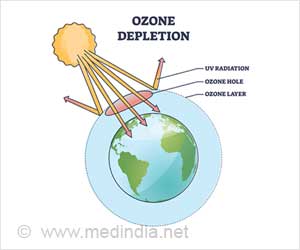Methamphetamine is dangerous to human health, that many accept. But what is not realized is that the illegal labs that produce meth could pose a serious threat to the environment too.
Methamphetamine is dangerous to human health, that many accept. But what is not realized is that the illegal labs that produce meth could pose a serious threat to the environment too.
Dr Raktim Pal, from the Centre for Environmental Risk Assessment and Remediation (CERAR) at the University of South Australia, explains how waste from illicit drug manufacturers can contaminate land and pose a threat to human and environmental health.Speaking at the CleanUp 09 conference in Adelaide recently, he said clandestine manufacturers or ‘cooks’ of methamphetamine typically wash toxic waste from the production of the drug down drains or dump it untreated into the environment.
“A drug laboratory is often a temporary set-up, used for a brief period and abandoned without clean-up. The operation is then moved to another temporary location, causing contamination to quickly escalate in the locality,” he added.
Toxic chemicals used in making drugs can find their way into soil, air and water; however, little research has been done into this problem, according to Dr Pal and his colleagues, Professor Ravi Naidu and Professor Megharaj Mallavarapu.
“Over five kilos of toxic waste are generated for every kilo of methamphetamine produced,” said Professor Naidu. Local residents can unknowingly be exposed to and endangered by this toxic waste through inhalation, skin absorption or by drinking contaminated water.
“Primary contaminants of concern related to meth labs include known carcinogens like benzenes, and other toxins such as methylene chloride, trichloroethane and toluene.”
“Individuals exposed to meth lab contamination may experience dizziness, headaches and reactions, chemical burns, lung damage, and nerve damage,” he added.
Advertisement
Dr Pal and the CERAR team tested the potential for the drugs to leach into the ecosystem. They found that the drugs, their parent chemicals and chemical by-products can persist in the environment for many years.
Advertisement
“To make the matter even more complicated, property owners or those who may buy it afterwards may be liable for the clean-up costs and risks, even though they are both innocent and ignorant of any illegal drug activity,” he added.
“Environmental clean-up costs for clandestine meth labs range from $5000 to $150 000. The presence of one of these labs can sharply reduce property values or even lead to its condemnation,” he says.
Further research and government collaboration is need on how to control the problem, according to the CERAR researchers.
“Preventing clandestine drug manufacturers from dumping their wastes is a challenging and difficult task given the extreme secrecy under which these labs operate. Effective legislation and tougher penalties for the ‘cooks’ may help to reduce the number of illicit labs in operation,” said Dr Pal.
Young people who support the illegal drug trade by purchasing drugs need to be aware they are damaging the environment as well as they health, he adds.
In the future, the research may help police to uncover drug ‘cookers’ by producing a chemical ‘fingerprint’ that will help to convict them, according to the CERAR team.
Source-Medindia
GPL








